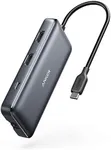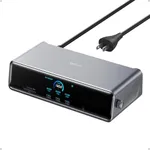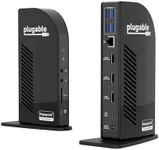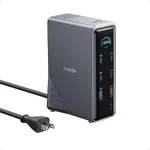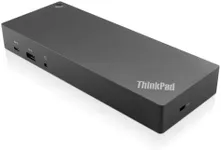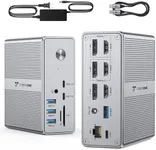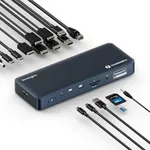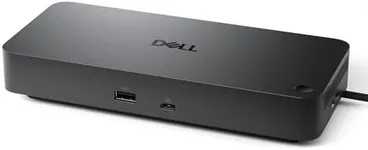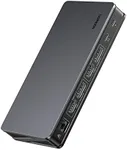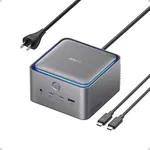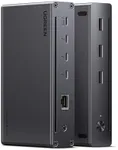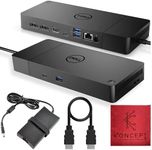Buying Guide for the Best Docking Stations
Choosing the right docking station can significantly enhance your productivity and convenience, especially if you use multiple devices or need to connect various peripherals. A docking station allows you to expand the connectivity options of your laptop or desktop, making it easier to connect monitors, keyboards, mice, external storage, and other devices. When selecting a docking station, consider your specific needs and the types of devices you plan to connect. Here are some key specifications to look for and how to choose the best fit for you.Port TypesPort types refer to the different kinds of connections available on the docking station, such as USB, HDMI, DisplayPort, Ethernet, and audio jacks. This spec is important because it determines what devices you can connect to your docking station. If you need to connect multiple monitors, look for docking stations with multiple HDMI or DisplayPort options. For connecting peripherals like keyboards and mice, ensure there are enough USB ports. If you require a stable internet connection, an Ethernet port is essential. Assess your devices and choose a docking station that offers the necessary ports.
CompatibilityCompatibility refers to whether the docking station works with your laptop or desktop's operating system and hardware. This is crucial because not all docking stations are universally compatible. Some are designed specifically for certain brands or models. Check if the docking station supports your device's operating system (Windows, macOS, Linux) and if it matches your device's connection type (USB-C, Thunderbolt, etc.). Ensure the docking station is compatible with your device to avoid connectivity issues.
Power DeliveryPower delivery is the ability of the docking station to charge your laptop or other devices while connected. This spec is important because it can eliminate the need for separate chargers and reduce cable clutter. Docking stations with higher wattage power delivery can charge more powerful laptops. If you have a high-performance laptop, look for docking stations that offer 60W or more power delivery. For smaller devices, lower wattage may suffice. Consider your device's power requirements and choose accordingly.
Resolution SupportResolution support refers to the maximum display resolution the docking station can handle. This is important if you plan to connect external monitors for better visual quality. Higher resolution support means sharper and clearer images. Docking stations typically support resolutions like 1080p, 1440p, and 4K. If you need high-definition displays for tasks like graphic design or video editing, opt for docking stations that support 4K resolution. For general use, 1080p or 1440p may be sufficient. Match the resolution support to your monitor's capabilities and your visual needs.
Data Transfer SpeedData transfer speed refers to how quickly data can be transferred between your devices and peripherals connected to the docking station. This is important for tasks that involve large file transfers, such as video editing or backing up data. USB 3.0 and USB-C ports typically offer faster data transfer speeds compared to USB 2.0. If you frequently transfer large files, look for docking stations with USB 3.0 or USB-C ports. For general use, USB 2.0 may be adequate. Consider your data transfer needs and choose a docking station that offers the appropriate speed.
Build QualityBuild quality refers to the overall construction and durability of the docking station. This is important because a well-built docking station will last longer and withstand daily use. Look for docking stations made from high-quality materials like aluminum or sturdy plastic. Check for solid connectors and ports that won't wear out easily. If you travel frequently or use your docking station in different environments, prioritize build quality to ensure it can handle the wear and tear. Choose a docking station that feels robust and reliable.
